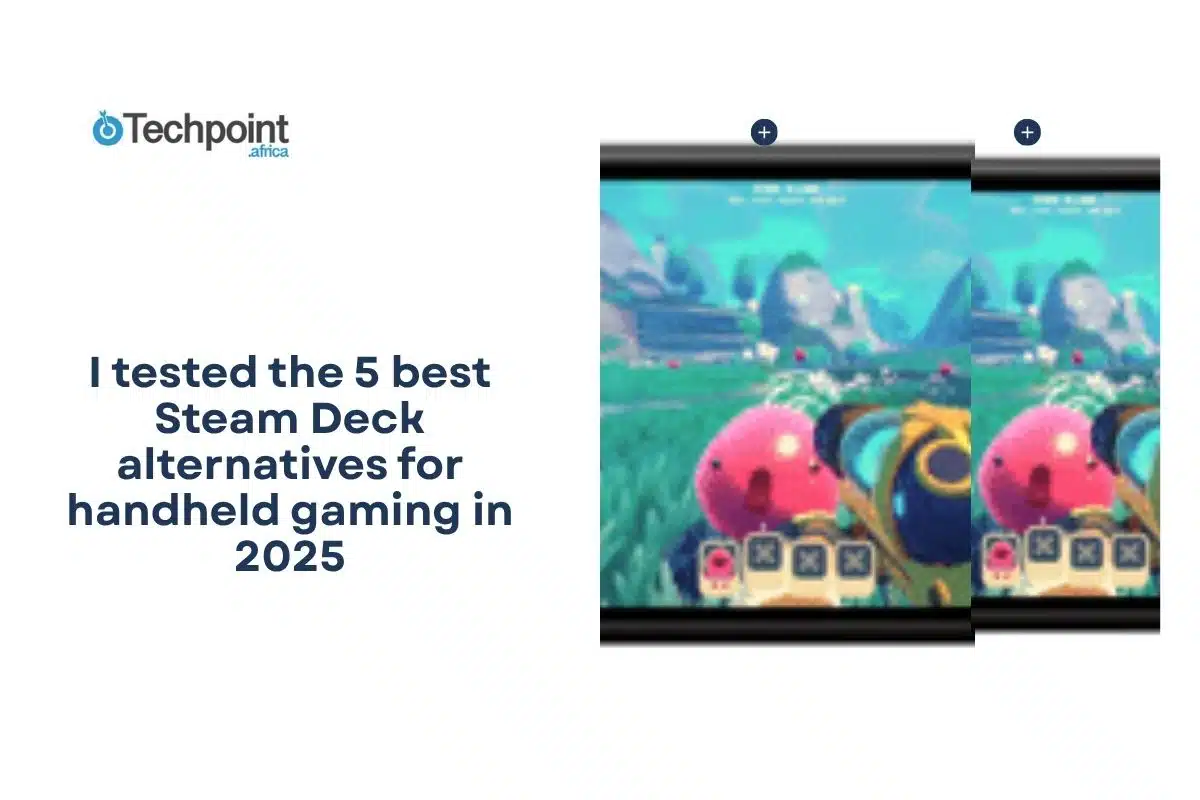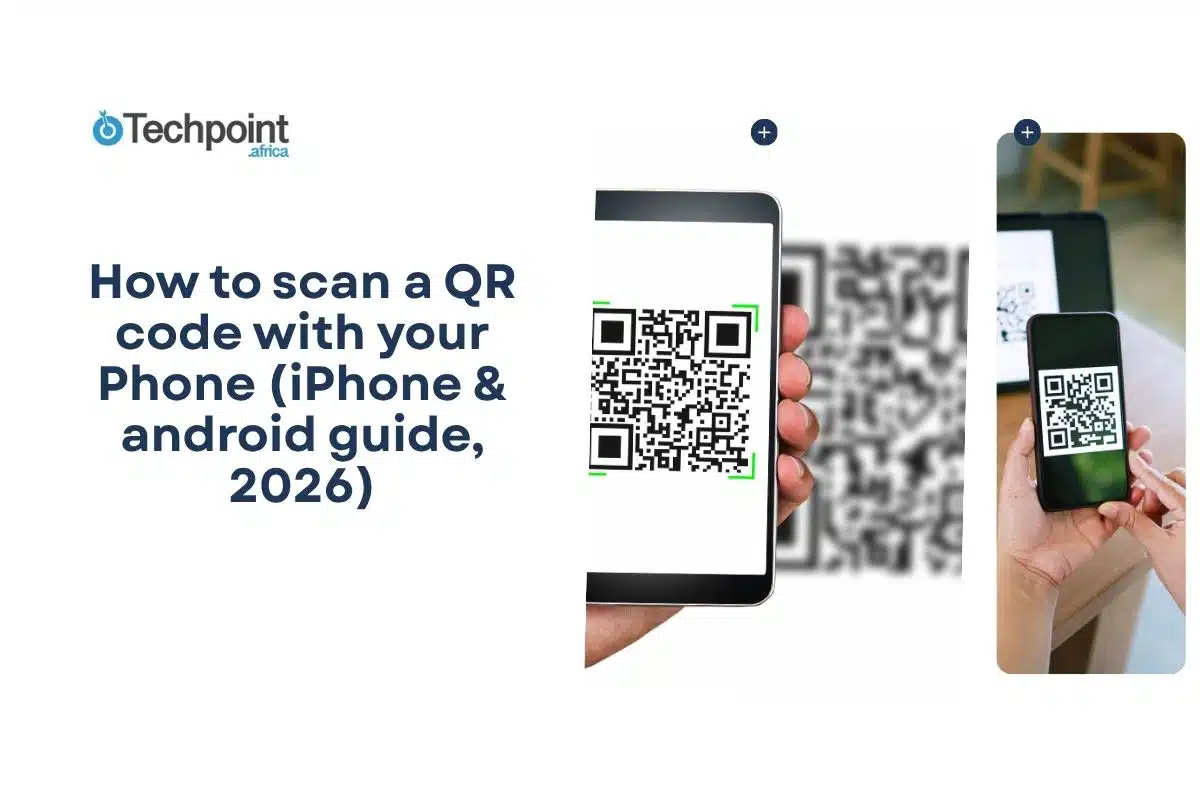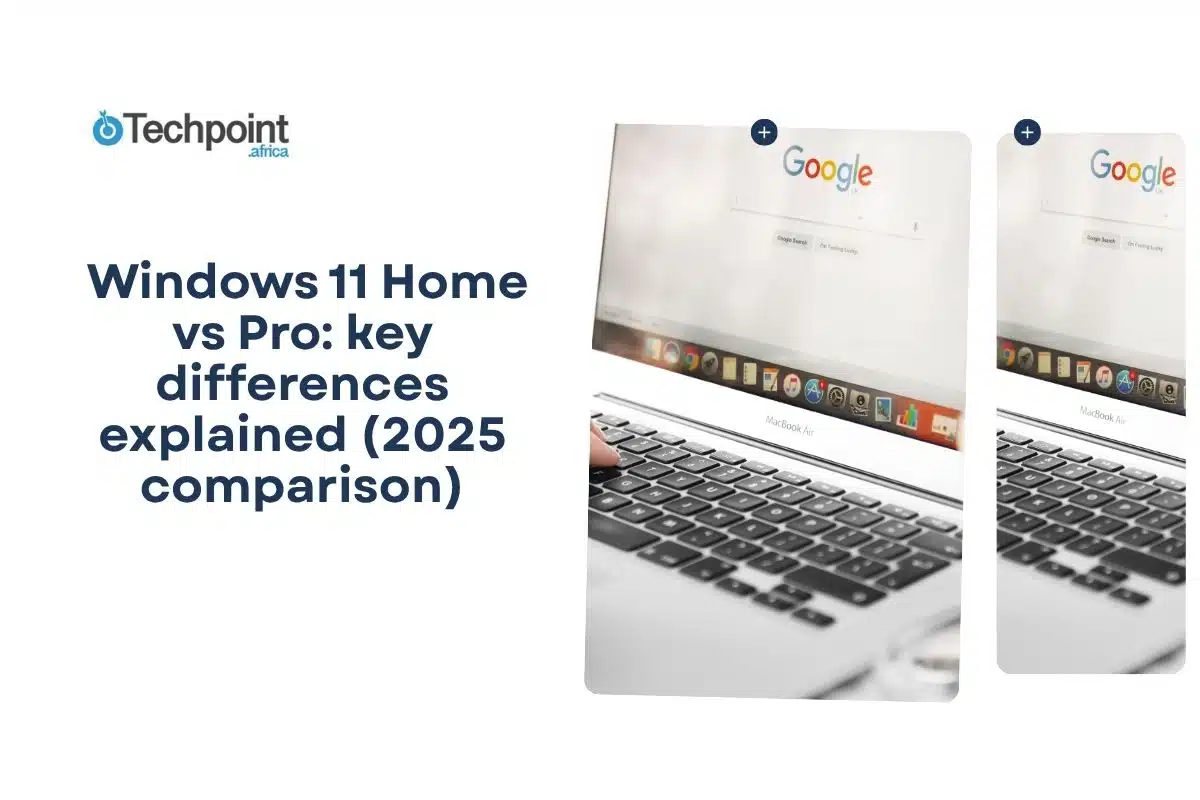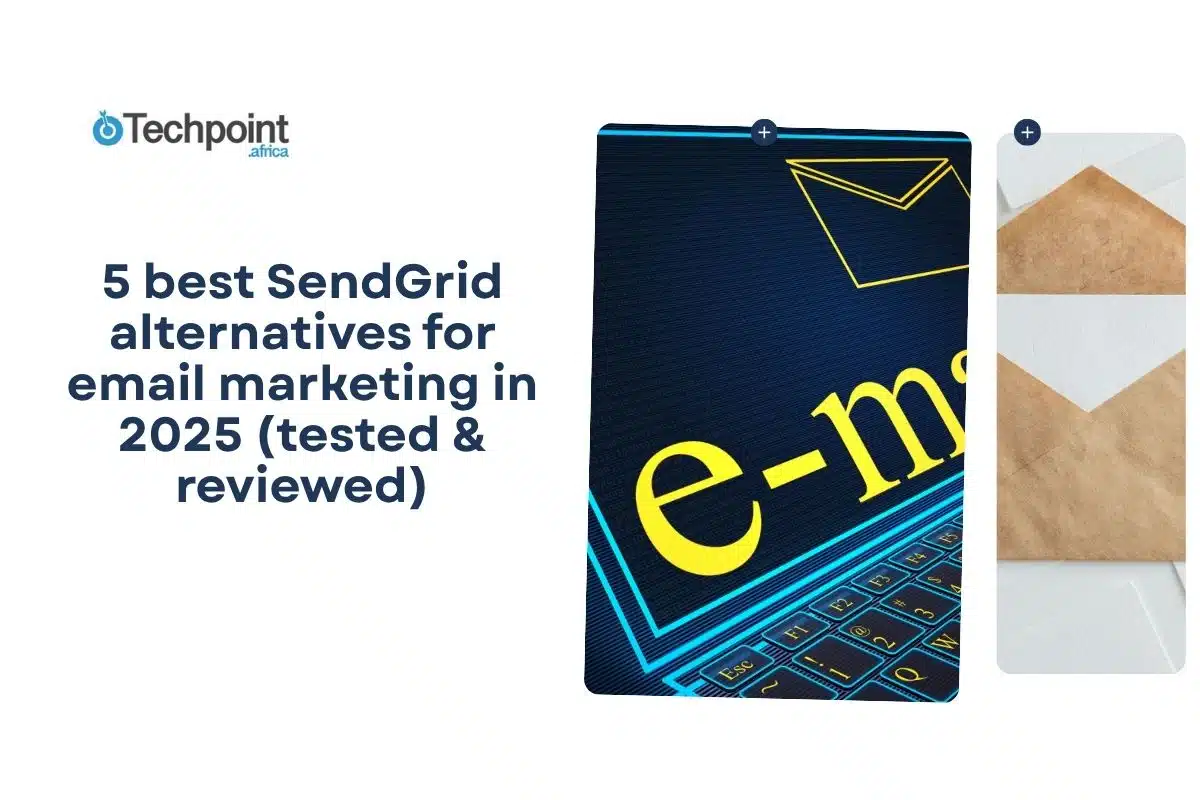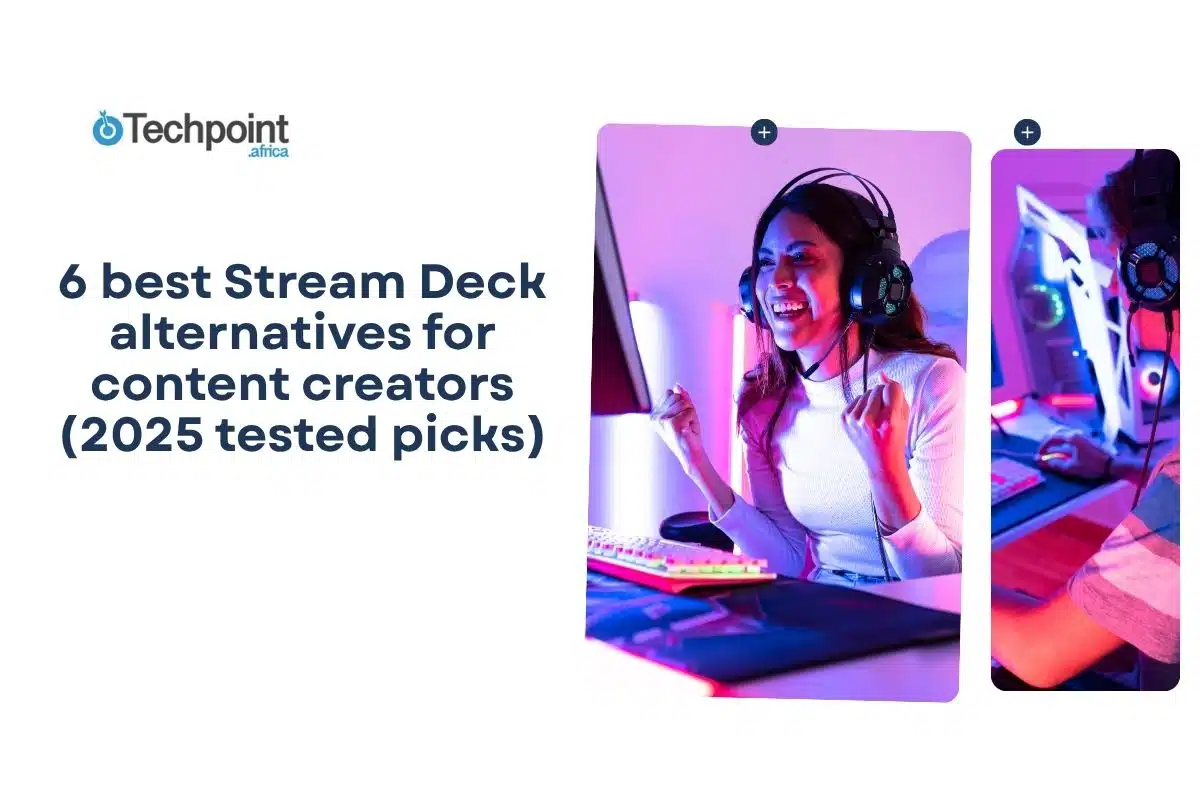Key takeaways:
- The Steam Deck is excellent but not perfect. Even gamers who own it still look for alternatives. Some players want more raw power, while others look for better screens, lighter designs, or just variety.
- The five best Steam Deck alternatives I tested in this article are the ASUS ROG Ally, Lenovo Legion Go, Nintendo Switch, MSI Claw 8, and Logitech G Cloud, along with four more options.
- The Steam Deck OLED remains the most balanced option for PC gamers seeking a reliable blend of performance, compatibility, and comfort.
- The ASUS ROG Ally is a better-performing device for Windows-native gaming, though it misses the Steam Deck’s handy trackpads.
- The Lenovo Legion Go with detachable controllers is very impressive. The Nintendo Switch 2 and Switch OLED also have detachable magnetic Joy-Con 2 controllers and mouse-style pointer control.
- The MSI Claw 8 AI+ is best for AAA gaming, but it’s bulkier and pricier than most. On the other hand, the Logitech G Cloud is for gamers who love cloud gaming and battery life. It’s also lightweight and affordable.
I recently came across a gamer who said they own a Steam Deck OLED but are still searching for an alternative. My first thought? Why bother looking elsewhere when you already have one of the best handhelds out there? But the question stuck with me. What would make someone want another device if they already have a Steam Deck OLED?
That curiosity sent me down a rabbit hole. The Steam Deck has been a big name in handheld gaming since 2022, but it’s far from the only player in the space. Handheld gaming itself has become huge, portable, convenient, and a lot cheaper than building a massive PC setup. Still, no single device is perfect, and that includes the Steam Deck. Some games don’t run well on it, others aren’t supported at all, and then some players just enjoy trying something new.
So, I decided to test things out for myself. I tried five handheld alternatives to compare their performance with the Steam Deck. Some were impressive, some had clear trade-offs, and none were a one-size-fits-all solution. In this article, I’ll share what I discovered so you can decide which handheld might actually fit your gaming style best.
Steam Deck overview: What is the Steam Deck?

I won’t assume you already know what the Steam Deck is. Maybe this is your first time looking into handheld gaming devices, or maybe you’ve only heard about them in passing. Either way, let’s quickly break it down.
Quick specs
| Specs | Details |
| Developer | Valve |
| Release date | LCD: 2022OLED: 2023 |
| Operating system | SteamOS |
| Display | LCD: 7” touchscreenOLED: 7.4” touchscreen |
| Connectivity | USB-C, Bluetooth, Wi-Fi |
| Power | LCD: 40 Wh (2-8 hours of gameplay depending on content)OLED: 50 Wh (3-12 hours of gameplay depending on content) |
The Steam Deck is Valve’s handheld gaming PC, built to bring the Steam library into a portable, console-like experience. It runs SteamOS, a Linux-based operating system, on a custom AMD APU. What that means in simple terms is you get the power of PC gaming in a compact device with up to a 7-inch display, full-sized controls, and trackpads.
Valve first released the Steam Deck in February 2022. It supports both native Linux games and Windows titles using Proton, a compatibility layer that enables them to run. You can also switch to desktop mode, use launchers like Lutris, or run emulators and remote play from your PC.
Valve has since released multiple models. The original LCD version was launched in 2022, while the OLED models debuted in 2023, offering brighter visuals, improved battery life, and a slightly larger 7.4-inch screen. Every model comes with a carrying case and a Steam profile bundle.
From a design standpoint, the Deck feels comfortable in hand with a balanced grip that’s clearly made for long sessions.
You also get useful extras, including a USB-C port for charging, docking to external displays, or connecting peripherals; expandable storage via a microSD card; and stereo speakers.
Steam Deck key features
- Controls: Full-size thumbsticks, triggers, and buttons that make it feel like a proper console controller.
- Trackpads: Touch-sensitive surfaces for games that need mouse-like precision, especially fast-paced shooters.
- Gyro support: Built-in motion controls provide added accuracy by allowing you to tilt the device itself.
- Grip buttons: Extra buttons on the back that keep your thumbs free for trackpad or stick control.
- Audio: Stereo speakers and headphone support.
- Suspend/Resume: Pause your game and get back when you want to.
- MicroSD card slot: To expand your storage.
- Touchscreen: For typing, swiping, and navigating the Steam interface.
Pricing
Starts at $549 for the 512GB model and $649 for 1TB OLED on Steam Deck.
Quick glance: Top 5 Steam Deck alternatives
| Alternatives | Developer | Release date | My rating (/10) |
| ASUS ROG Ally | ASUS (Republic of Gamers brand) | Rog Ally: 2023Rog Ally X: was announced in 2024 | 8.9/10 |
| Lenovo Legion Go | Lenovo | Legion Go: 2023Legion Go S: It was launched in 2025 | 8.7/10 |
| Nintendo Switch 2 | Nintendo | 2025 | 8.5/10 |
| MSI Claw 8 AI+ | MSI | 2025 | 8.5/10 |
| Logitech G Cloud | Lenovo | 2022 | 7.5/10 |
My testing methodology
When I started looking beyond the Steam Deck, I realized there are plenty of handheld gaming devices out there, each with its own unique strengths and appeal. To keep things focused, I narrowed my testing down to five of the most talked-about options:
- ASUS ROG Ally X
- Lenovo Legion Go
- Nintendo Switch 2
- MSI Claw 8 AI+
- Logitech G Cloud
All of these devices have generated buzz in the gaming community, but hype alone isn’t enough. I wanted to see what actually makes them stand out.
Testing handhelds is more than just glancing at the specs. I dug into the things that really matter: how they perform in real-world gaming, battery life, design, and whether their price feels worth it for what you get. For each of the five, I took a closer look at these factors and compared them side by side.
To keep things fair, I ran each device through the same kinds of games. This gave me a good sense of not just performance but also how enjoyable each device feels, depending on the type of player you are.
Alternative 1: ASUS ROG Ally
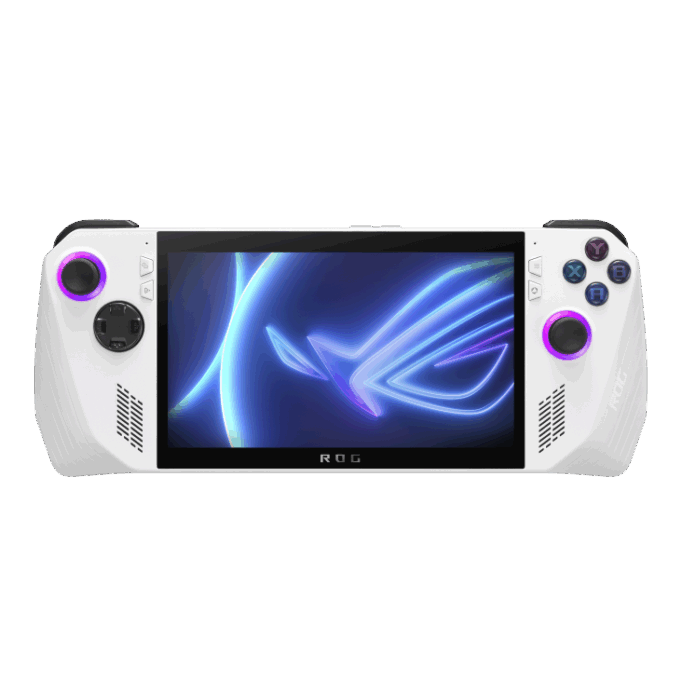
The ASUS ROG Ally was launched in mid-2023 and runs Windows 11. In 2024, Asus announced the Ally X, improving storage and battery life. It is a handheld that feels like a portable gaming laptop in your hands.
Specs and design
The Ally packs AMD’s Ryzen Z1 series APU, paired with RDNA3 integrated graphics. This setup can run your PC library, including Steam, Epic, Xbox Game Pass, and emulators.
The device comes with 16 GB of RAM, and the Ally X has up to 24 GB. Storage starts at 512 GB SSD, with higher-end models going up to 1 TB. You can also expand with a MicroSD card if you need more space.
Its 7-inch touchscreen is bright and colorful, especially in outdoor use. The controls include two thumbsticks, a D-pad, bumpers and triggers, face buttons, plus rear programmable M1/M2 buttons. There are also gyro sensors for motion aiming.
There is RGB lighting under the thumbsticks, and it has metal cooling vents. It’s lightweight and comfortable for long play sessions with the back grips.
Connectivity features a USB-C port with up to 65W power delivery, Wi-Fi, Bluetooth, a headphone jack, and dual stereo speakers for enhanced audio.
What I liked
- The 7-inch screen is bright and sharp.
- Not limited to SteamOS, any PC game or app works, including Steam, Xbox, Epic, and cloud gaming.
- Lightweight with good grips, plus stylish RGB touch.
- Comes with 3 months of Xbox Game Pass for new devices.
- The ROG Ally X has an improved battery life and feel, and allows cloud game streaming.
What I didn’t like
- Navigating menus with the touchscreen or thumbsticks feels clunky at times.
- There’s no one-button suspend/resume like on the Steam Deck, and no touchpads for precise mouse-like control.
Pricing
The ASUS ROG Ally is available for $499.99 on the Asus eStore, and the Ally X is listed for $799.99.
My Rating
8.9/10
Alternative 2: Lenovo Legion Go
Specs and design
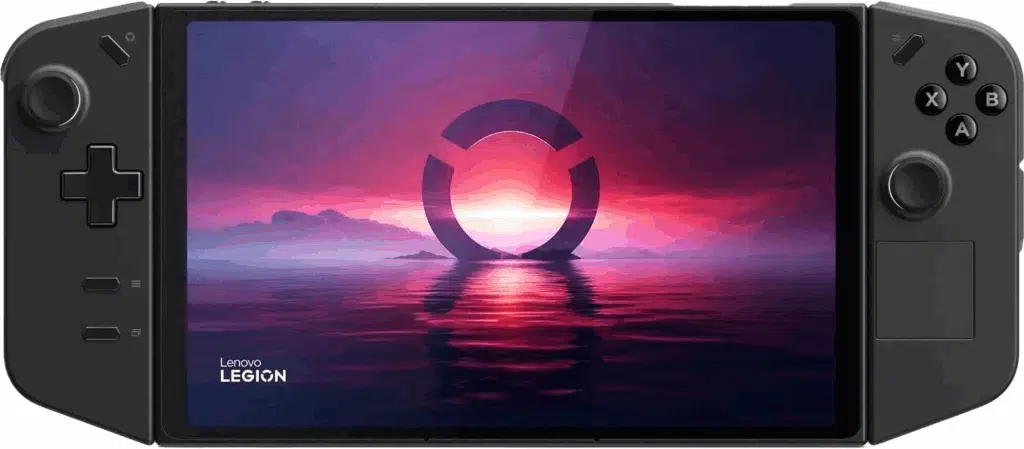
Running on Windows 11, the Lenovo Legion Go has the AMD Ryzen Z1 Extreme APU, the same chip inside the ASUS ROG Ally, along with up to 16 GB of RAM and as much as 1 TB of SSD storage. The 8.8-inch touchscreen, the detachable “Truestrike” controllers, and a kickstand are part of its setup.
You get two USB-C ports, a microSD slot, Wi-Fi, and Bluetooth. The 49.2 Wh battery charges quickly but only lasts about 1–2 hours during heavy gaming. The size is on the bulkier side, but Lenovo has added some thoughtful touches, such as dual joysticks, assignable grip buttons, and mini touchpads, which provide different ways to play. You can also charge it while it sits in its jacket dock, which is a handy feature.
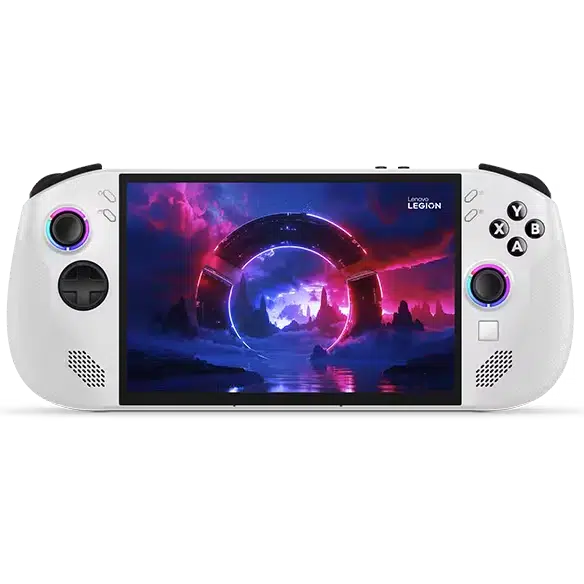
I also tried out the newer Legion Go S, which launched in 2025. This one feels more refined. It’s lighter, a little more compact, and has an 8-inch screen that actually delivers higher resolution and faster refresh rates. The controllers aren’t detachable this time, but you do get a 55.5 Wh battery and up to 32 GB of RAM. It features the AMD Ryzen Z2 Go processor and runs on Windows 11 and SteamOS. Lenovo offers three months of Xbox PC Game Pass, a nice bonus.
What I liked
- Strong specs for a handheld and the SteamOS for Legion Go S
- The big 8.8-inch display on the Legion Go is gorgeous, but I also like the lighter feel of the Legion Go S
- Detachable controllers with hall-effect sticks and dual touchpads on the Legion Go give you more control options
- The built-in kickstand makes it easy to prop up and play with an external controller
What I didn’t like
- Legion Go is heavier and chunkier than most handhelds
- Short battery life under heavy gaming, often just 1–2 hours.
However, the Legion Go S improves on these trade-offs with a bigger battery and lighter build.
Pricing
You can get the Legion Go S for around $759.99 directly from Lenovo or on Amazon. The original Legion Go is now mostly available through resellers, including Lenovo, but it is still sold for $749.99. Also, Lenovo has a Legion Go 2 in the pipeline, so keep an eye out for that.
My overall rating
8.7/10
Alternative 3: Nintendo Switch 2
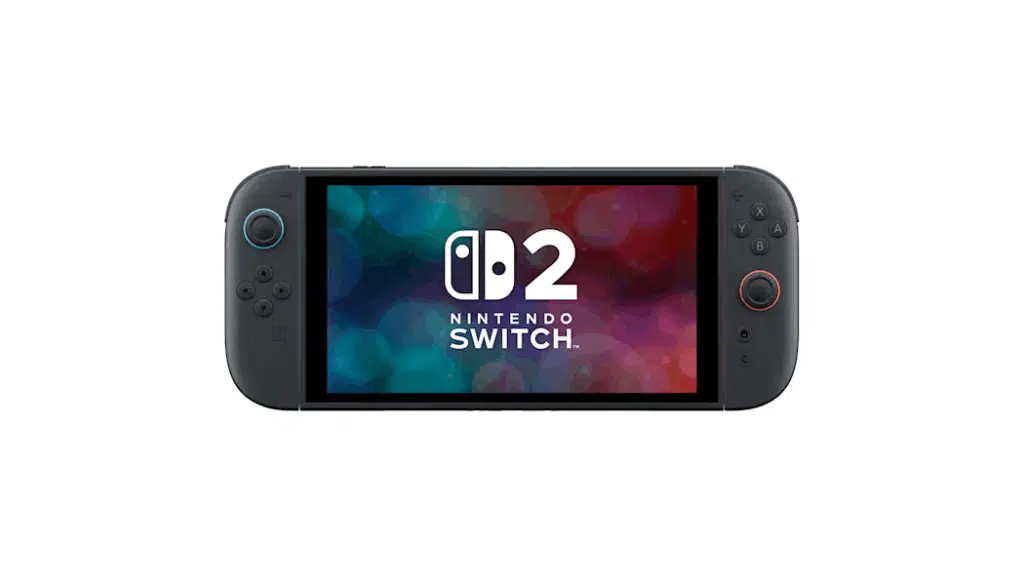
The Nintendo Switch 2, launched on June 5, 2025, carries forward the hybrid console-handheld concept that made the original Switch a household name.
Specs and design
Switch 2 features a 7.9-inch LCD touchscreen and is powered by a custom NVIDIA Tegra T239 chip, complemented by 12 GB of LPDDR5X RAM and 256 GB of storage, which can be expanded with a microSD card. It supports both physical game cards and digital downloads, meaning you can play new Switch 2 exclusives as well as your old Switch library.
Connectivity includes Wi-Fi, Bluetooth, two USB-C ports, and a headphone jack. Nintendo added a noise-cancelling microphone for GameChat, their social gaming feature. The Joy-Con 2 controllers now attach magnetically, and they come with a built-in “mouse sensor” for pointer control in certain games. There’s also a button dedicated to launching GameChat.
Its battery capacity can last 2 to 6.5 hours, depending on the game. In handheld mode, the Switch 2 feels great. The screen is bright, and the ergonomics are improved.
What I liked
- 7.9-inch display screen with more storage.
- Detachable magnetic Joy-Con 2 controllers and mouse-style pointer control.
- Has exclusives like Mario Kart World and Pokémon Legends.
- Social touches like GameChat with voice and video options help bring multiplayer sessions to life.
What I didn’t like
- Battery life is lower than that of the Switch OLED
- Has an LCD panel instead of OLED.
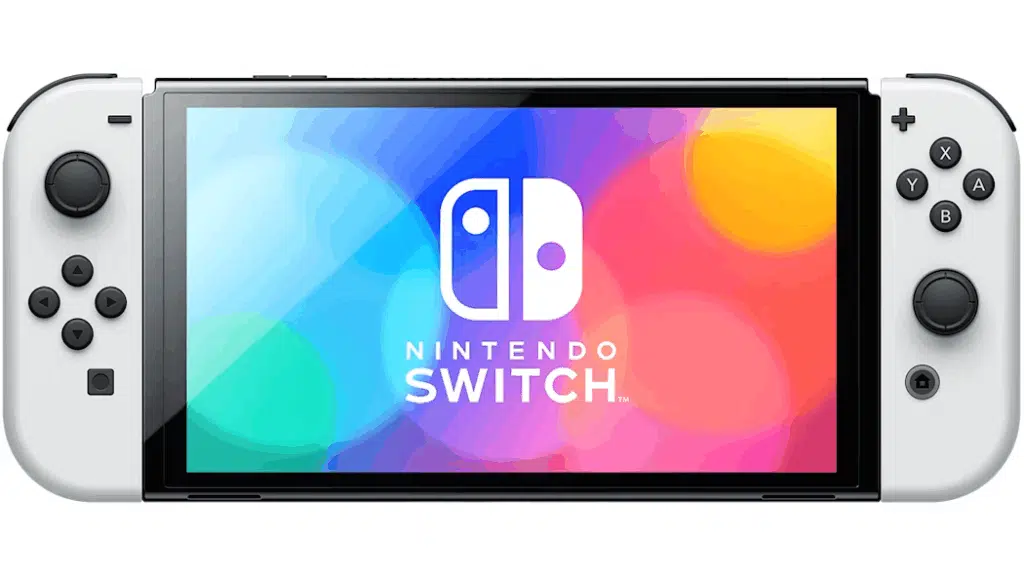
Meanwhile, the Nintendo Switch OLED is also a great pick in the Nintendo Switch series. It has a 7’ display, a kickstand for viewing in desktop mode, a built-in wired LAN port for TV streaming, detachable controllers, and multiplayer options. Battery capacity boosts from 4.5 to 9 hours.
Pricing
The Nintendo Switch 2 starts at $449.99, and the Nintendo Switch OLED starts at $399.99.
My rating
8.4/10
Alternative 4: MSI Claw 8 AI+
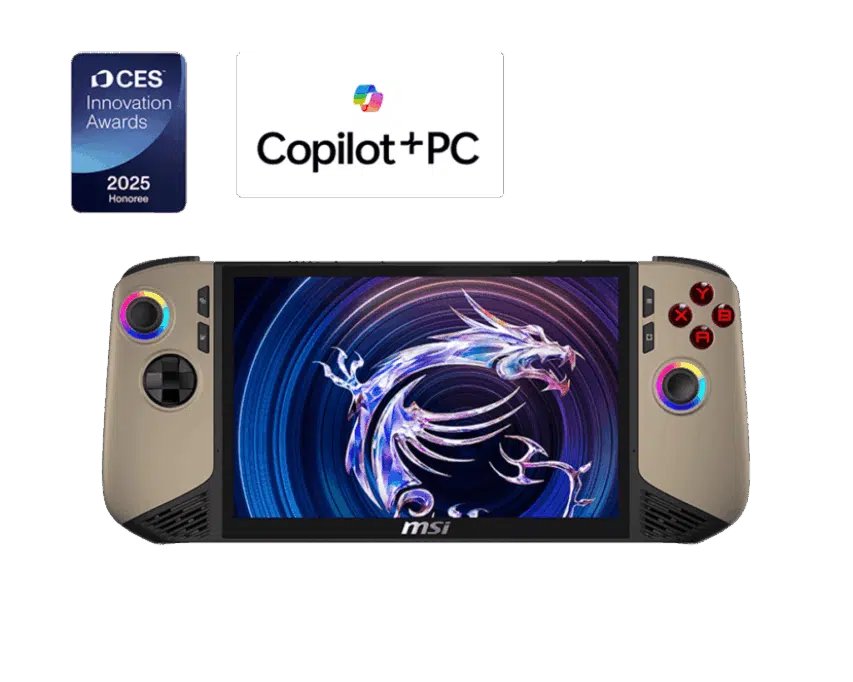
The MSI Claw 8 AI+ is one of the heavy hitters in the handheld gaming space, launching in early 2025. With its bold design and high-end internals, it’s clear that MSI built this device to compete directly with the Steam Deck and other premium handhelds. What makes it stand out is its combination of Intel’s latest processor, a large 8-inch touchscreen, and a battery that can actually keep up with demanding sessions.
Specs and design
Inside, the Claw 8 AI+ runs on the Intel Core Ultra 7 258V, paired with 32 GB of LPDDR5x RAM and a 1 TB NVMe SSD that is expandable using microSD. The display is an 8-inch touchscreen, which is noticeably larger than most competitors, and has an 80 Wh battery capacity.
Connectivity includes Wi-Fi, Bluetooth, dual Thunderbolt 4 ports, and USB-C. For controls, it has Hall-effect thumbsticks, improved triggers and bumpers, RGB-backlit buttons, and rear paddles.
On the software side, it runs Windows 11 Home.
What I liked
- The Intel Core Ultra 7 processor paired with Arc graphics makes this one of the fastest handhelds.
- The 8-inch display feels roomy and makes long sessions easier on the eyes.
- The battery lasts longer.
- Hall-effect sticks, responsive triggers, and extra paddles.
- The dual Thunderbolt 4 ports is another feature I like
What I didn’t like
- It’s bulky and heavy.
- It works, but navigating menus without a keyboard or mouse often feels clunky.
- No OLED panel.
Pricing
The MSI Claw 8 AI+ can be gotten for up to $1,000. It is one of the pricy gifts to send a gamer.
My rating
8.5/10
Alternative 5: Logitech G Cloud
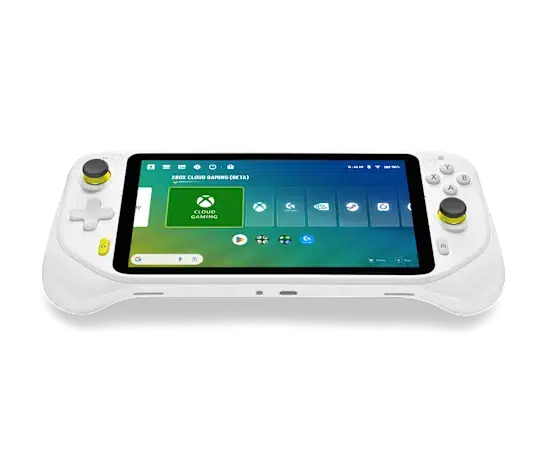
The Logitech G Cloud feels more like an Android tablet designed around gaming. Unlike the Steam Deck or Nintendo Switch, this handheld doesn’t pack PC-grade hardware. Instead, it leans entirely on cloud streaming as long as your Wi-Fi connection is solid.
It runs Android 11, giving you access to the Google Play Store for mobile games, emulators, and media apps. On top of that, it comes preloaded with Xbox Cloud Gaming, NVIDIA GeForce Now, and Steam Link, so you can stream AAA titles without downloading them.
Specs and design
Inside, the G Cloud is powered by a Qualcomm Snapdragon 720G CPU with an Adreno 618 GPU, paired with 4GB of RAM and 64GB of storage (expandable via microSD). The 7-inch 1080p touchscreen is bright and sharp, though not OLED.
It’s Wi-Fi only, with Bluetooth for accessories. Ports include USB-C for charging and data and a headphone jack. The battery capacity is one of its highlights, offering around 10–12 hours of real gameplay on a single charge.
As for the build, it’s light and comfortable to hold for long sessions, and the grips make it feel more like a dedicated gaming device than just another Android tablet.
What I liked
- Lightweight and comfortable design
- Excellent battery life (10–12 hours)
- Cloud streaming apps pre-installed
- Google Play access for Android games and emulators
What I didn’t like
- Wi-Fi only, no offline AAA gaming
- Tablet-grade hardware means demanding Android games can struggle
- Performance depends on the internet quality
- No OLED display for deeper contrast
Pricing
It is available for $299.99 on Logitech.
My rating
7.9/10—not competing with Steam Deck in hardware, but offers good cloud gaming for handhelds.
Steam Deck and 5 alternatives: Head-to-head comparison
| Features | Steam Deck OLED | ASUS ROG Ally X | Lenovo Legion Go | Nintendo Switch 2 | MSI Claw 8 AI+ | Logitech G Cloud |
| CPU | AMD custom APU—Zen 2, 4 cores / 8 threads, 2.4–3.5 GHz (Valve APU) | AMD Ryzen Z1 Extreme Processor (8-core 16-thread, up to 5.10 Ghz) | AMD Ryzen Z1 Extreme Processor (3.30 GHz up to 5.10 GHz) | Custom processor made by NVIDIA | Intel Core Ultra 7 processor 258V | Qualcomm Snapdragon 720G (SD720G)Octa-core CPU up to 2.3 GHz |
| GPU | Integrated AMD RDNA2—8 CUs, up to 1.6 GHz (1.6 TFLOPS FP32) | AMD Radeon Graphics (AMD RDNA 3, 12 CUs, up to 2.7 GHz, up to 8.6 Teraflops) | Integrated AMD Radeon Graphics | Custom processor made by NVIDIA | Intel Arc 140V | Adreno (integrated with Snapdragon 720G) |
| RAM | 16 GB LPDDR5 on-board RAM (6400 MT/s quad 32-bit channels) | 24GB LPDDR5 on board | 16 GB LPDDR5X-7 , 500 MT/s | Up to 12 GB LPDDR5X | 32 GB LPDDR5x | 4 GB LPDDR4x |
| Storage | Steam Deck 512GB NVMe SSD Steam Deck 1TB NVMe SSD | 1TB PCIe 4.0 NVMe M.2 SSD (2280) | 1 TB SSD M.2 2242 PCIe Gen4 TLC | 256 GB (UFS) | PCIe Gen4x4 M.2 SSD | 64 GB internal (eMMC) |
| Display | 7.4-inch diagonal HDR OLED | 7-inch 1080p (FHD) 120 Hz touchscreen | 8.8-inch QHD, IPS, Touchscreen, 144 Hz | 7.9-inch LCD screen (HDR10 support and VRR up to 120 Hz) | 8-inch 120 Hz Touch Screen | 7-inch 1920×1080 (FHD) IPS touchscreen, 60 Hz |
| Battery | 50 Whrs battery | 80 Whrs | 49.2 Whrs | 5220 mAh (internal battery) for 2 to 6 hours gameplay depending on the game | 80 Whrs | Up to 10 hours gameplay |
| Price | $549 | $799.99 | $749.99 | $449.99 | $1,049.99 | $299.99 |
Real-world gaming performance: Steam Deck vs five alternatives
When I put the Steam Deck up against five of its strongest alternatives, I didn’t just look at specs on paper. I noted how each one held up in real-world gaming. Here are my findings across different titles and scenarios.
Cyberpunk 2077 (performance)
Cyberpunk 2077 is a tough game to run, and MSI Claw 8 AI+ won this round. It outpaced both the Steam Deck OLED and the ROG Ally, with its Intel Arc GPU. The ROG Ally followed.
Elden Ring (Frame rates and settings)
When it came to Elden Ring FPS, Steam Deck and five of the alternatives were impressive, especially ASUS ROG Ally, Lenovo Legion Go, and Nintendo Switch.
Indie games (Battery life)
Battery life is just as important as raw performance if you like long sessions. Here, Logitech G Cloud stood out for battery endurance.
Emulation performance
For emulation, the Steam Deck OLED is a better option with its stable Linux-based ecosystem and good emulation scene. Also, the Logitech G Cloud does well here, though it struggles with more demanding classics.
My overall takeaway
After putting them through their paces, here’s how I’d break it down:
- Best for AAA gaming: MSI Claw 8 AI+
- Most balanced PC handheld: Steam Deck OLED
- Best Elden Ring machine: ASUS ROG Ally
- Best for long indie sessions: Logitech G Cloud
- Best console-style experience: Nintendo Switch 2 and Switch OLED
FAQs on handheld gaming PCs
- Are Steam Deck alternatives worth it over the original?
Well, sometimes. If you’re looking for raw performance, a bigger or brighter screen, or you just prefer Windows-native software, then devices like the Legion Go, ROG Ally or Ally X, Nintendo Switch 2/OLED, or the MSI Claw line do a good job.
- Which handheld has the best game compatibility?
Windows-based handhelds such as the ROG Ally and Legion Go tend to have the broadest compatibility because they can run most PC games directly.
- How important is battery life for handheld gaming?
Battery life matters a lot, but it really depends on how you play. If you’re into short sessions, you may not notice it as much. But if you’re planning long trips or marathon gaming, then battery life becomes a deciding factor.
- Can these devices run AAA games smoothly?
Yes, most of the handhelds I tested in this article can handle modern AAA titles. For best performance, though, you’ll often need to adjust the in-game settings.
Conclusion
Of course, handheld gaming didn’t start today. The first portable consoles appeared decades ago, but the Steam Deck brought a new wave. Since its release, interest has exploded, and from 2023 to 2025, we’ve seen several challengers step in with devices that match or even surpass what the Deck can do.
High-end Windows handhelds, such as the ASUS ROG Ally, Lenovo Legion, and MSI Claw, offer more power and PC compatibility, albeit at a higher price.
On the other side, devices like the Logitech G Cloud and the Nintendo Switch are pushing handhelds in different directions, with the Switch OLED/2 building an impressive device feel and exclusive game access.
Also, manufacturers are getting creative with hardware upgrades like better screens, stronger batteries, and improved cooling, as well as software features like SteamOS support, Xbox integration, AI assistants, and smart gaming accessories.
However, after testing all these alternatives, I realized that there’s no single true winner. Each handheld device comes with its own strengths and trade-offs. Choosing the right Steam Deck alternative depends on what you value most. For example, one gamer said the lack of a trackpad on the ROG Ally didn’t bother them, while another saw it as a deal breaker.
Ultimately, this article provides a comprehensive overview of the top five options, their performance, and what distinguishes each one. With that, you should be able to decide which handheld fits your gaming style best.
Additionally, to expand your list of options, there are a few more handhelds worth mentioning. Some of them don’t fully replace the Steam Deck in the traditional sense, but they do give you interesting ways to game.
- Backbone One: A controller you attach to your smartphone, turning it into a portable gaming device.
- PlayStation Portal: Ideal for those already in the PlayStation ecosystem who want to stream their PS5 games remotely.
- Razer Kishi V2: This is similar to the Backbone and snaps onto your phone, but with Razer’s design and app support.
- GPD Win 4: A handheld PC with a sliding keyboard for portable gaming.
Disclaimer!
This publication, review, or article (“Content”) is based on our independent evaluation and is subjective, reflecting our opinions, which may differ from others’ perspectives or experiences. We do not guarantee the accuracy or completeness of the Content and disclaim responsibility for any errors or omissions it may contain.
The information provided is not investment advice and should not be treated as such, as products or services may change after publication. By engaging with our Content, you acknowledge its subjective nature and agree not to hold us liable for any losses or damages arising from your reliance on the information provided.

